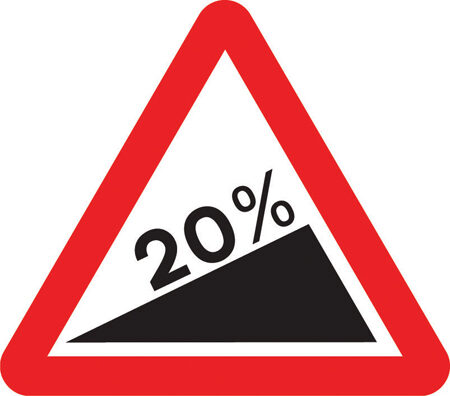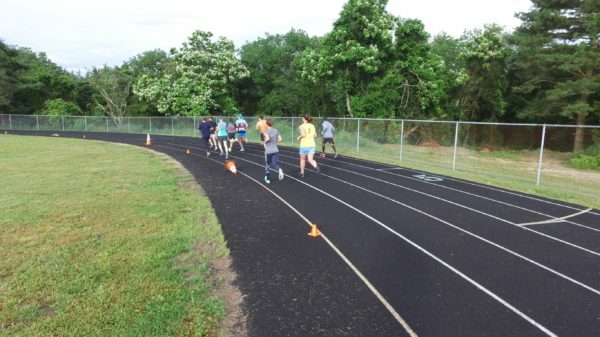Do you remember a time when you exercised simply for your health? Maybe you went to the gym and did whatever felt right for the day. Maybe you ran a few miles several times a week. Maybe you took group classes to push yourself and stay motivated.
There is no doubt that exercise, performed consistently several times a week, does a body good.
But, you know you’ve shifted from exercising to training when you start to think about dedicated goals for each workout session. That’s specificity training.
This is the moment you begin to think and act like an athlete.
When you are training to meet specific performance goals, every training session should have a clear purpose for helping you achieve those goals.
If you aren’t sure of the purpose of your workout, then you should re-think whether you should be doing it in the first place. Furthermore, these training objectives should be appropriate to the particular training period you are in – prep, base, build, or peak. (Need information about the phases of training? Click here for a refresher on periodization.)
If you have a coach, then your coach should be doing that thinking for you. But, if you are self-coached, or are trying to decide the value of a particular training plan, then you’ll want to consider the role of some basic and advanced objectives for various types of workouts.
The basic objectives that any training plan should incorporate include endurance, force and technical efficiency. And, depending upon your performance goals, race distance, and athletic experience, you may also want to pursue some advanced objectives including muscular endurance, anaerobic endurance, and power. In this post, we consider a few of the training goals for endurnace athletes.
Endurance
Endurance is a key starting point for any runner or triathlete. Without it, there is no speed, no power, no efficiency. Beginners to endurance sport will spend the majority of their time focusing almost exclusively on this key training objective. But even experienced athletes need to keep their endurance base relative to their racing goals.
Keep in mind, however, that building endurance is not always about long runs, rides or swims. Building endurance also results from consistency and frequency in training routines. So, think about your total weekly (or micro-cycle) volume, as well as the duration of any one workout.
Endurance takes time to develop. You cannot safely go from running 3 miles to running 13 in a few week’s time. You must gradually adapt to the increased training load, both in terms of the duration of your longest workout and in terms of your weekly training volume.
It is also important to note that endurance is one of the first abilities to fade during prolonged absence from training. This is why we need to be especially careful not to begin a taper too early, or to cut off total volume too dramatically before it is time. (If you are interested, we’ve offered some ideas for an effective taper protocol here.)
To make the most of your endurance, you will want to introduce workout segments that allow you to enhance your technical efficiency – or skills.
Skills & Efficiency
Skills-based workouts focus on improving your ability to move effectively and efficiently while engaged in sport-specific activity. This relates to your form and economy of movement while swimming, biking or running.
Examples of training sessions might include swimming drills, cycling cadence work or outdoor-skills training for cornering, grabbing bottles, u-turns, etc. In running, you could incorporate strides, or various drills to help promote leg speed, as well as proper biomechanical form. In these examples, you are training your neuromuscular system to work effectively to optimal economy of movement. In other words: ensure you aren’t wasting energy in your movements.
Any time in the training calendar is a good time to work on your skills, and they can be easily built into any training session as a warm up or cool down. Because the intensity on these sessions is minimal, they may also double as recovery-style workouts.
Strength
 The third key objective relates to developing your strength – or ability to apply force and power. In other words, how hard can you work against resistance?
The third key objective relates to developing your strength – or ability to apply force and power. In other words, how hard can you work against resistance?
Your strength allows you to power up hills, fight currents, and push into the wind on those “breezy” rides.
You can achieve strength-related objectives through:
- strength training, such as lifting weights, functional/bodyweight training, or plyometrics.
- sport-specific workouts, such as big gear work on the bike, hill repeats while cycling or running, or using the pull buoy or paddles while swimming.
Strength connects with skill to improve your overall ability to apply power in quick and efficient ways. In this case, you are looking for the neuro-muscular activation to be able to hit your efforts quickly and effectively.
For example, you may work on 8 x 20 second all out intervals, with 1:40 recoveries. In cycling, you might do 5 second all out bursts, followed by 10 seconds of soft pedaling, and repeat that for 2-5 minutes. In running, you might complete a series of strides, focusing on fast feet. In swimming, this may include 25 yard sprints with long rests.
In each of these cases, you are working partly on strength and partly on skill – combining the two makes you more efficient in the long term.
Muscular Endurance
Muscular endurance allows you to connect your growing strength to your endurance, as you increase your ability to hold increasingly harder efforts (yet, sub-maximal efforts) for an extended period of time. Muscular endurance helps you to fight fatigue toward the end of a race, or the end of each leg of a triathlon. It allows you to remain strong through tough conditions – nailing your goal pace or watts.
These workouts might included extended intervals at ~80-97% of threshold effort. These sorts of efforts are referred to by some as “sweet spot” because they are hard enough to bring about a training adaptation, but not so hard that you require a lot of recovery – so you can get back to it the next day. This is a somewhat large range, so what you are holding here really depends on:
- the specific sport (swim, bike or run)
- length of the work and recovery intervals
- specifics of your goal race
- your history training at these intensities
For example, the length and/or intensity of the intervals will increase throughout the training plan. These efforts might also include tempo runs or rides, which are often described as “comfortably hard” efforts. If you are looking for a muscular endurance workout you can do on the trainer, I’ve written about one on my personal blog site, which can be found here.
The Speedy Stuff
There are a related series of objectives you might work toward at the top-end of the cardiovascular system – from the aerobic to the anaerobic threshold. Muscular endurance workouts will take you very near your threshold. What we are referring to in this section are the workouts that have you at or above that threshold.

In other words: frothy, sweaty, hard breathing, cussing maximal work.
You want to be really careful incorporating these types of workouts. While they bring the chance for big fitness reward, they also come with some of the biggest risks in terms of injury or overtraining if there is not enough proper recovering within and after these sessions.
These sessions may focus on one or a combination of abilities such as:
- Sprint power
- VO2max
- Lactate threshold
- Anaerobic capacity
These workouts include short intervals at high rates of exertion, 100% of threshold–and beyond. Depending on how close or beyond you are flirting with your threshold, these might be anywhere from 5 seconds to 5 minutes. Recovery intervals vary as well. Generally (although not always), the harder the interval, the longer the recovery period. We talk a bit about the ways you can work these efforts in this post about aerobic capacity.
While long course athletes typically do not emphasize anaerobic efforts, the research suggests some well-considered threshold and anaerobic training can improve aerobic performance–for all types of athletes. Moreover, for athletes over 40, a weekly (short) anaerobic session may help prevent some of the performance losses associated with aging. However, proper recovery is important following anaerobic sessions to prevent injury.
(Looking for a good group session to help you push through these types of hard efforts – try our group training with options in Grantville, PA or Atlantic City, NJ areas!)
As you evaluate your training plan, or speak with your coach about the plan he or she has created for you, keep these training objectives in mind. Consider how each of these objectives fits in with the broader periodization of your training season, your experience, and your performance goals.

